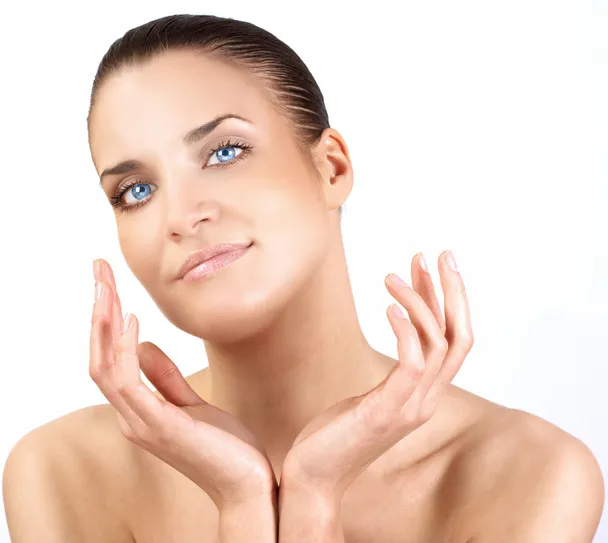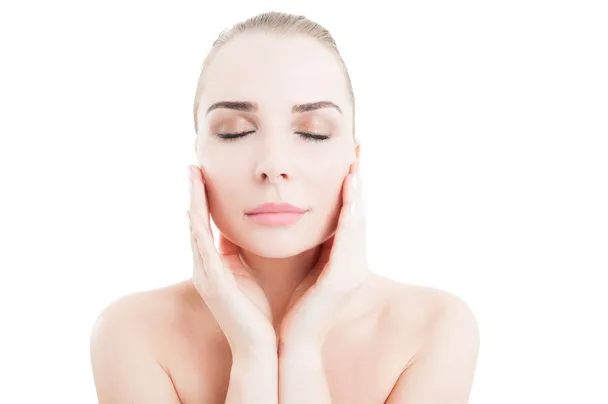Can Slugging Benefit Oily Skin? Here’s What We Know
Slugging, a skincare trend that involves applying a thick layer of occlusive moisturizer to the skin before bedtime, has gained popularity for its ability to lock in moisture and promote hydration. While this practice is often recommended for dry or dehydrated skin types, its suitability for oily skin remains a topic of debate. In this article, we explore the concept of slugging and investigate whether it can benefit individuals with oily skin.
Understanding Slugging:
slugging, originating from the Korean beauty community, has garnered attention for its unique approach to skincare. This method entails the application of a heavy, occlusive moisturizer, often formulated with ingredients like petrolatum or mineral oil, as the final step in one’s skincare routine. The core concept behind slugging is to create a protective barrier that seals in moisture, effectively preventing water loss and boosting the skin’s hydration levels overnight. By forming this barrier, slugging enthusiasts believe that the skin can better retain moisture, leading to improved hydration and a plumper, more youthful appearance. Proponents of slugging often praise its efficacy in combating dryness, particularly during harsh weather conditions or in climates with low humidity. Additionally, slugging is said to contribute to smoother, softer skin texture by locking in moisture and promoting optimal hydration. One of the most notable benefits associated with slugging is its ability to impart a dewy, radiant complexion. By trapping moisture beneath the occlusive layer, slugging can create a luminous glow that lasts throughout the day. Overall, slugging has gained popularity among skincare enthusiasts for its potential to address dryness, enhance skin texture, and promote a coveted dewy look, making it a favored technique in many skincare routines.
The Debate Surrounding Slugging and Oily Skin:
The suitability of slugging for oily skin has been a subject of debate within the skincare community, despite its widespread popularity among individuals with dry or dehydrated skin. While slugging has been lauded for its ability to lock in moisture and improve skin hydration, concerns have been raised regarding its compatibility with oily skin types. Some individuals with oily skin express apprehensions about exacerbating excess oil production or clogging pores by applying a heavy, occlusive moisturizer. They fear that the thick consistency of the moisturizer may create a barrier that traps sweat, sebum, and debris, leading to potential breakouts or worsening of existing acne. However, proponents of slugging for oily skin argue that this skincare technique can still offer several benefits. By creating a protective barrier on the skin’s surface, slugging may help balance oil production by preventing excessive moisture loss, thereby reducing the skin’s need to overcompensate by producing more oil. Additionally, the occlusive nature of slugging can strengthen the skin’s natural barrier function, protecting it from external aggressors and environmental stressors that may contribute to oiliness and inflammation. Furthermore, some individuals report that consistent slugging can help improve the appearance of fine lines and wrinkles, as the moisturizer effectively seals in moisture and plumps up the skin. Overall, while opinions on slugging for oily skin may vary, many believe that when done correctly with the appropriate products, slugging can offer benefits beyond just hydration, potentially helping to address concerns specific to oily skin types.
The Potential Benefits of Slugging for Oily Skin:
While further research is warranted to conclusively ascertain the effects of slugging on oily skin, several potential benefits have been proposed:
- Enhanced Hydration: Oily skin, despite its tendency to produce excess sebum, can still experience dehydration, particularly when exposed to environmental stressors or harsh skincare products. Slugging may provide a solution by replenishing moisture levels and fortifying the skin’s barrier function. By locking in moisture, slugging can help restore balance to the skin, resulting in a more hydrated and resilient complexion.
- Protection Against Environmental Aggressors: The occlusive properties of slugging create a protective barrier on the skin’s surface, shielding it from external irritants and pollutants. These environmental aggressors can exacerbate oiliness and inflammation in oily skin types. By forming a barrier, slugging helps safeguard the skin, reducing the risk of irritation and maintaining its overall health.
- Improved Skin Texture: Slugging has the potential to promote smoother, more supple skin texture by sealing in moisture and fostering optimal hydration levels. By preventing moisture loss, slugging can minimize the appearance of roughness and unevenness, resulting in a softer and more refined complexion.
- Potential Regulation of Sebum Production: While concerns exist about slugging exacerbating oiliness, some individuals have reported that consistent use of occlusive moisturizers can lead to the regulation of sebum production over time. By maintaining optimal hydration levels and supporting the skin’s barrier function, slugging may help normalize sebum production, resulting in a less oily complexion.
Tips for Slugging with Oily Skin:
For individuals with oily skin considering incorporating slugging into their skincare routine, here are some helpful tips to keep in mind:
- Choose the Right Moisturizer: Opt for a non-comedogenic, lightweight occlusive moisturizer specifically formulated for oily or acne-prone skin. Look for products labeled as oil-free or non-comedogenic to ensure they won’t clog pores or feel heavy on the skin. Ingredients like hyaluronic acid or dimethicone can provide effective hydration without exacerbating oiliness.
- Start with a Small Amount: Begin with a small amount of moisturizer and gradually increase the thickness of the layer as needed. A thin layer of product may be sufficient to reap the benefits of slugging without feeling greasy or uncomfortable. Experiment with different amounts to find the right balance for your skin’s needs.
- Target Specific Areas: Instead of applying the occlusive moisturizer all over the face, focus on specific areas of concern, such as dry patches or areas prone to dehydration. This targeted approach allows you to address specific skin concerns without overloading the entire face with product. For oily skin, concentrating on dry areas can help maintain balance without causing excess oiliness.
- Monitor Skin’s Response: Pay close attention to how your skin responds to slugging and adjust your routine accordingly. If you notice any signs of increased oiliness, congestion, or breakouts, consider reducing the frequency or thickness of the occlusive layer. It’s essential to listen to your skin’s cues and tailor your skincare routine to meet its changing needs.
- Consider Alternatives: If traditional occlusive moisturizers feel too heavy or greasy on your skin, consider alternative options such as lightweight gel moisturizers or hydrating serums. These products can provide hydration without the heaviness associated with traditional occlusives, making them more suitable for oily skin types.
individuals with oily skin can effectively incorporate slugging into their skincare routine to reap the benefits of enhanced hydration and skin barrier support without exacerbating oiliness or causing congestion. Experimentation and customization are key to finding the right approach that works best for your skin’s unique needs.
While the concept of slugging may initially seem counterintuitive for oily skin types, it’s essential to approach skincare with an open mind and consider individual differences in skin biology and response. While some individuals with oily skin may benefit from the added hydration and protection offered by slugging, others may find that lighter, gel-based moisturizers are more suitable for their needs. Ultimately, the key is to listen to your skin’s cues, experiment with different products and techniques, and tailor your skincare routine accordingly to achieve a healthy, balanced complexion.










